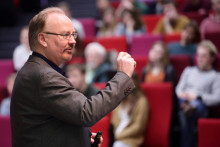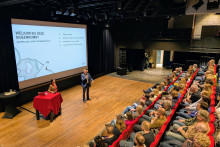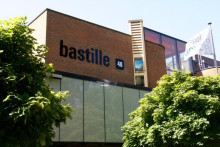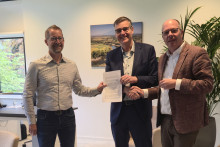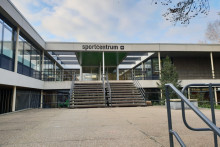Larson and his team try to determine how to make living in cities better for people and the planet. Many of his ideas are not only environmentally friendly, but also quite fun. They include a foldable car or transformable homes with robot walls.
Cities: good and bad
It seems that people simply love cities. About half of the global population lives in urban areas and cities are responsible for 90% of the population growth. These numbers are not likely to decrease, which is leading to many issues, including high crime rate or everybody´s favorite traffic jams. Even though cities bring many positives as well - they have proven to be the centers of creativity and entrepreneurship – their negative sides cannot be denied.
How to make living in cities better?
Larson talked about the history of cities and he explained that until industrialization cities were more compact. Most people lived in the city center and they could walk to all important places within the area. This led to strong social ties and productivity, which is something that is missing in many modern cities. ´We figured out that the key issues to focus on are density, proximity and diversity. You need everything – such as employment, shops or schools – to be close to each other. Proximity increases communication; social ties increase productivity, ´ says Larson.
City of microcities
How do we achieve urban innovation? According to Larson, the answer lies in dense and diverse districts that include everything necessary within a walking distance: ´We need independent neighborhoods with their own identities, like the ones you can see in most cities that developed before the invention of cars. We are aiming for a city full of microcities.´
Let´s share!
Imagine stepping out into the street and hopping into any car that stands nearby (without getting arrested later). That is basically what Larson would like to accomplish. ´I believe that sharing economy is crucial, ´ explains Larson. ´We need to create alternatives to private automobiles and provide people with shared vehicles that are ideally autonomous and electrical. The idea is to develop autonomous vehicles that can pick you up anywhere and anytime. They can park themselves and be used for many purposes. Such vehicles can be shared by many people, which means no insurance and maintaining costs for people and less vehicles in cities.´
Larson and his team work on many interesting vehicles that have the potential to fill cities in the future. Those include e-bikes, e-scooters and city cars that can fold. Three of these cars fit into one conventional parking spot.
Urban agriculture
Cities should also become places for agriculture. ´We have created a prototype of a city farm that uses aeroponics, meaning growing plants in air without soil. Such farms can be inside buildings and produce more food than if grown in soil, ´ clarifies Larson. Food production in cities could also decrease food waste, because it is grown and harvested at the place people need it.
Changing homes
Most people living in cities have to deal with relatively small living spaces. Apartments are becoming smaller, and so we need to use the space as efficiently as possible. Larson and his students work on ´architectural robotics´. Their goal is to come up with transformable homes with robot walls and furniture that allow even a tiny studio apartment to include many different ´rooms´. They will actually cooperate on this research with IKEA.
Design for people
In the end, Larson´s message is pretty simple: ´Today´s cities are designed for machines, not people. We should get back to what we had several thousand years ago. Design for people and add technology only if needed.´


